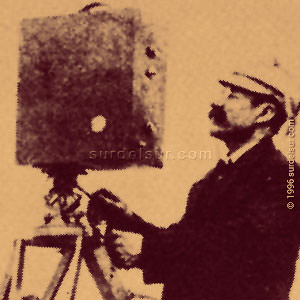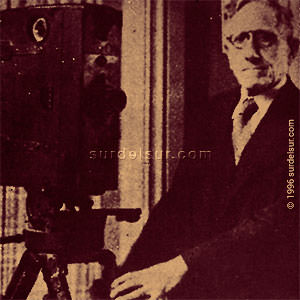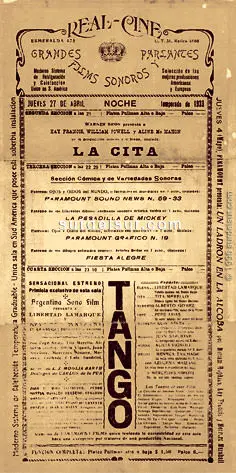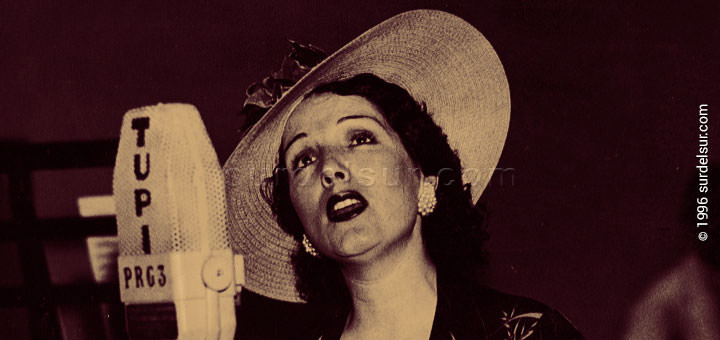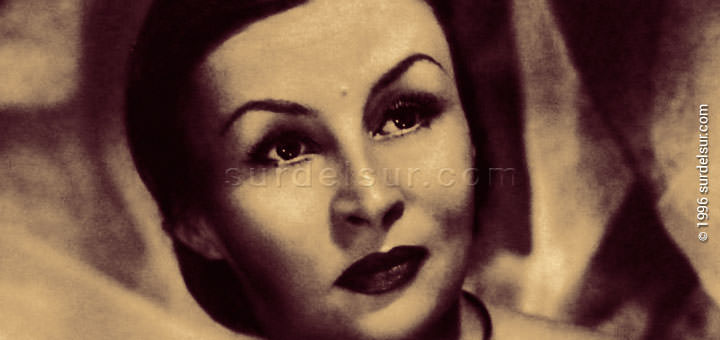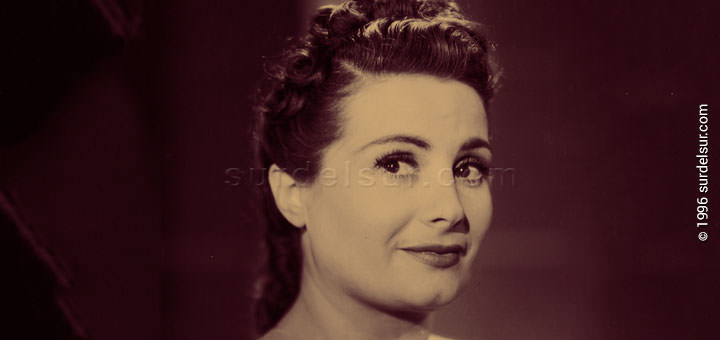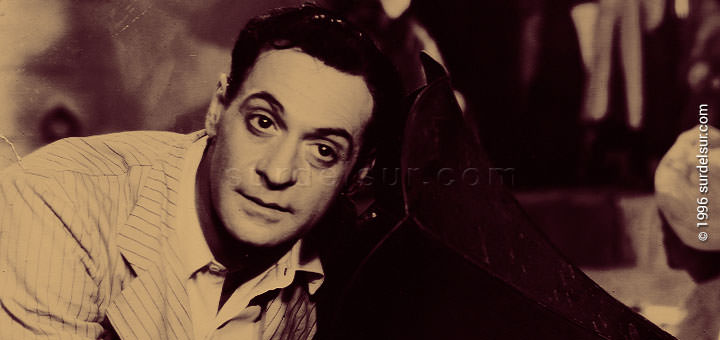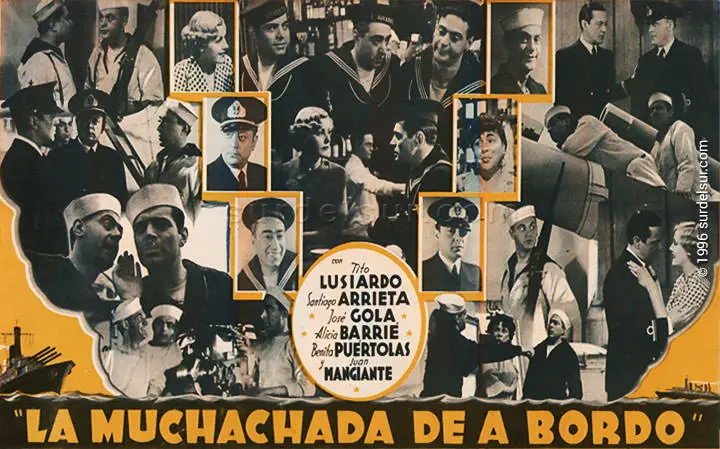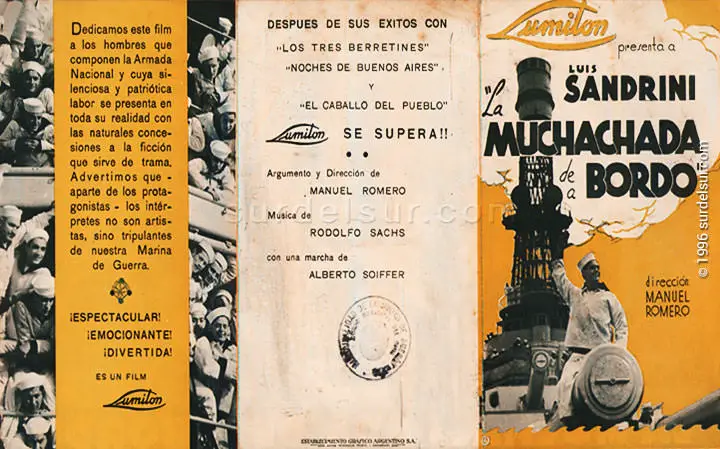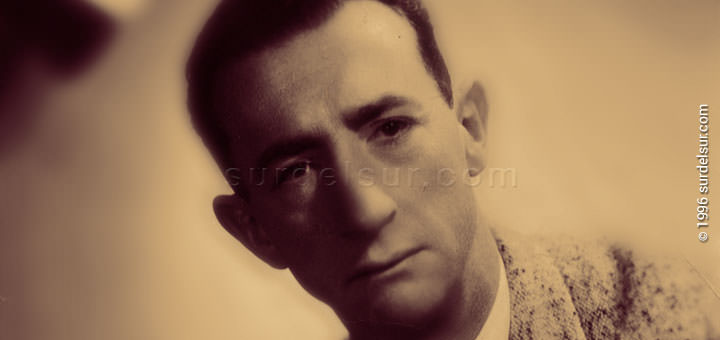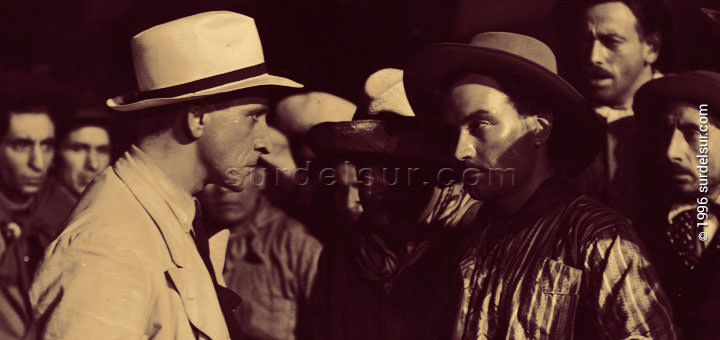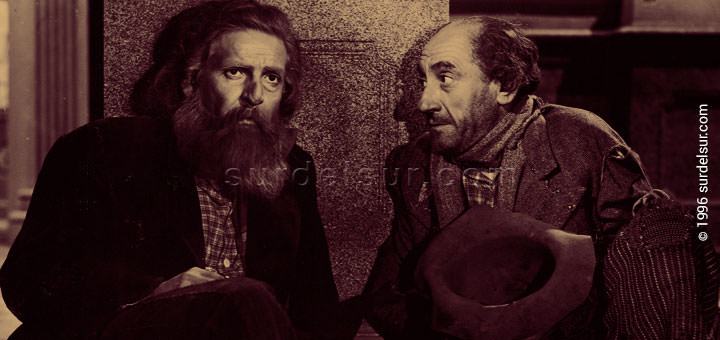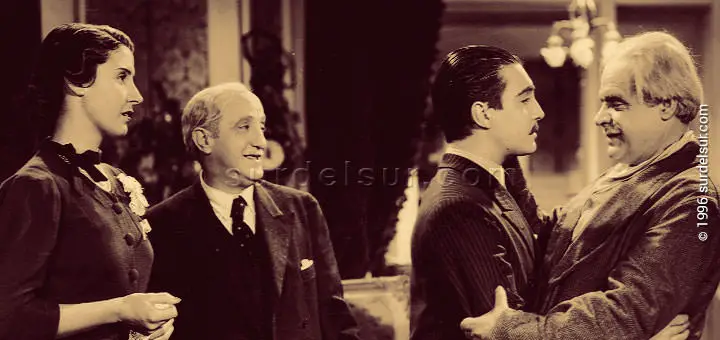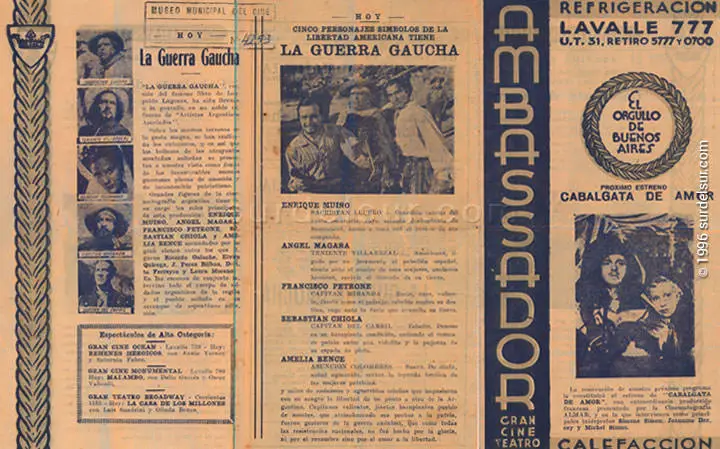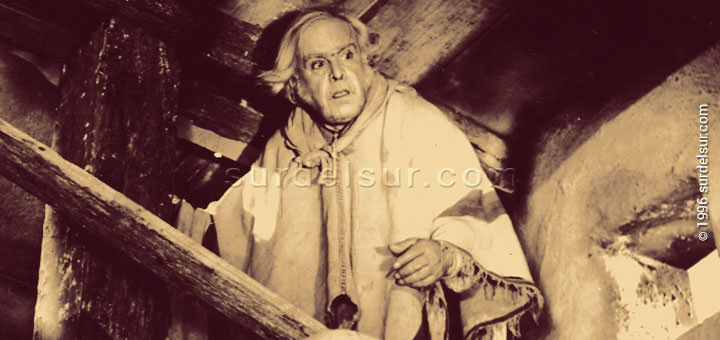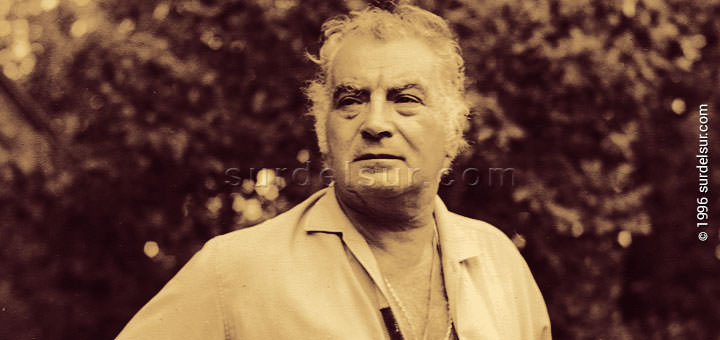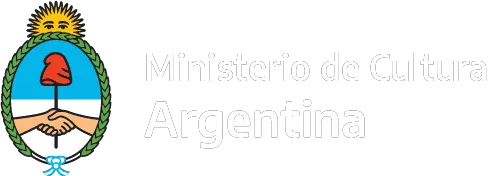Argentine cinema history begins with the first film exhibition with a motion picture of the Lumiére’s, that took place on July 18, 1896. In 1894 the kinetoscope had already made its arrival and, by early 1896, a kinetoscope concessionaire had tried public projections with a device of his own invention.
Article of the guest columnist, Paraná Sendros for surdelsur.com
The Silent Film
According to Argentine cinema history, in 1897, the import of French cameras started, and a Frenchman living in Argentina, Eugene Py, became the first filmmaker and cameraman with La bandera argentina (The Argentine Flag), a short movie.
In 1898, Dr. Alejandro Posadas initiated surgical cinema by shooting his own surgeries.
In 1900, the first theaters specially intended for movie projections and the first filmed news reports appeared.
After that, it is worth mentioning the essays of sound film in 1907.
The first fiction movie with professional actors, La revolución de mayo (May Revolution, 1910).
The first feature-length film, Amalia (1914).
The first big success, Nobleza Gaucha (Gaucho Nobleness, 1915), with a cost of 25,000 pesos and box-office collections for half a million in six months, aside from bootleg copies.
The world’s first animated feature film was El Apóstol (1917) written, produced and directed by Quirino Cristiani.
Also in 1917, Emilia Saleny was the first woman film director in Latin America, with her film El pañuelo de Clarita.
Including melodramas, thrillers, comedies and movies with countryside subjects, during the silent film period over 200 movies were shot, the most outstanding ones being those with a tango climate by Agustín Ferreyra. However, a true industry was never organized and the films were never properly preserved.
The first man of cinema, which uses in his productions a cinematic language was José Agustín Ferreyra (1889-1943), the Black Ferreyra, who makes auteur films. People was attending the screening of the film because “it is one of Ferreyra”. An example of his style is Perdón viejita (Sorry mother 1927)
The Sound Film
The true industrial arose with sound films in 1933. Virtually at the same time, Argentina Sono Film was born, with Tango (1933) , directed by Luis Moglia Barth , where Libertad Lamarque, Tita Merello and Luis Sandrini made their debut.
Lumiton opens a week later, Los tres berretines (The Three Whims) (1933), directed by Enrique T. Susini with Luis Sandrini . The three topics discussed are the tango, football and cinema framed in a family environment, starring Luis Sandrini with Luis Arata and Aníbal Troilo .
Soon, these and other companies produced 30 films per year which they exported to Latin America; especially, Libertad Lamarque’s melodramas, Sandrini’s comic films and later, also Niní Marshall’s.
In 1938 there were already 29 filming galleries, although with a still precarious equipment.
Top filmmakers up to 1940
The main filmmakers were the prolific Moglia Barth. The more promising and skillful Manuel Romero with: La Muchachada de a bordo (Boys on Board, 1936); La muchacha del circo (The Circus Girl, 1937) and Fuera de la ley (Outlaw, 1937) thriller forbidden in New York; y La vida es un tango (Life is a Tango, 1939), among others.
The rigorous Mario Soffici, the script-writer of Prisioneros de la tierra (Prisoners of the Land, 1939), -according to surveys, the best Argentine movie-, of other social dramas and also some comedies.
The suburban poet Leopoldo Torres Ríos author of La vuelta al nido (Back to the Nest, 1938), Pelota de trapo (Cloth Ball, 1948) and Aquello que amamos (What we love, 1959).
The rhetoric but effective Luis César Amadori filmmaker of Dios se lo pague (God Reward You, 1947) and Almafuerte (1949).
The creator of bourgeois comedies, Francisco Mugica, in Así es la vida (Such is Life, 1939) and Los martes, orquídeas (Tuesdays, Orchids, 1941).
Also the more refined Daniel Tynaire, Luis Saslavsky, Alberto de Zavalía and Carlos Borcosque.
Shortly afterwards, Carlos Hugo Christensen with dramas and erotic comedies in Safo (1943) and El ángel desnudo (The Naked Angel, 1946), the comedy directors Luis Bayón Herrera and Carlos Schlieper, and the epic cinema director Lucas Demare with: La guerra gaucha (The Gaucho War, 1942) and Su mejor alumno (His Best Pupil, 1944) also made their appearances.
Keys to the cinema of the ’40s
Three key events in the 1940s were: First, the formation of the Artistas Argentinos Asociados, cooperative, with a large part of the “intelligentzia” of the period. Secondly, the crisis for the lack of virgin film (as a consequence of Argentine neutrality during the Second World War) and since 1944. And in third place the increasing state intervention.
Eventually, this would lead to forms of censorship, blacklists, discretionary distribution of virgin film and favorable credits which only benefited occasional businessmen.
The second part of this report describes the main milestones of the Argentine Cinema from 1945 to 1995, with the great figures of the 50s, the creativity of the generation of ’60, and the time for revenge of Argentine cinema.
References:
All graphic material in this report is edited digitally. The customized version by surdelsur.com shown on this page is performed based on the following documents:
- Museo del Cine Pablo C. Ducros Hicken .[Photographs and ancient prints] kindly granted by Pablo C. Ducros Hicken Cinema Museum

